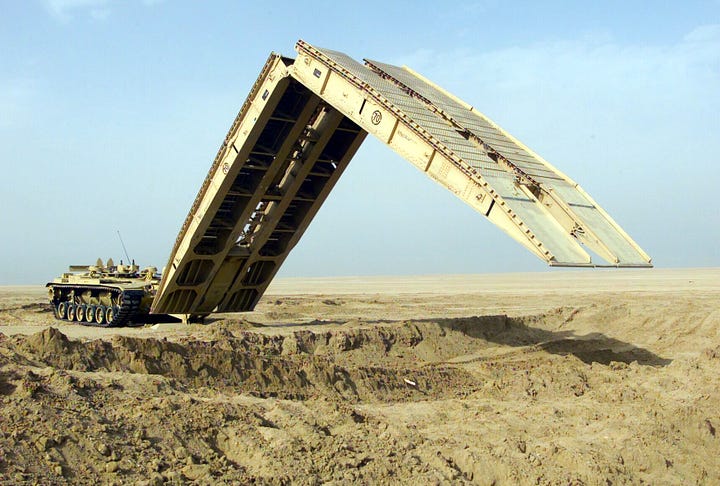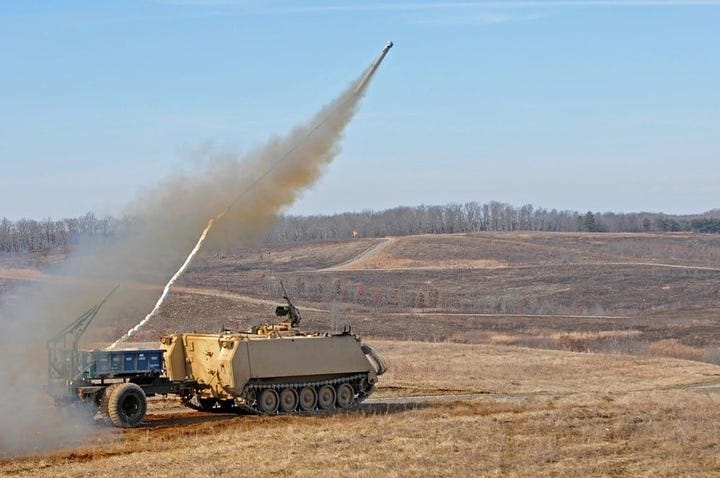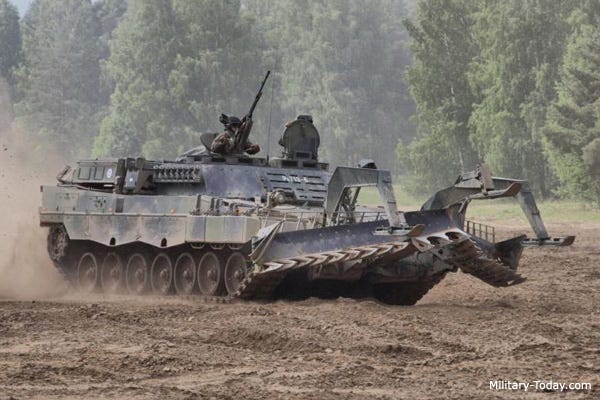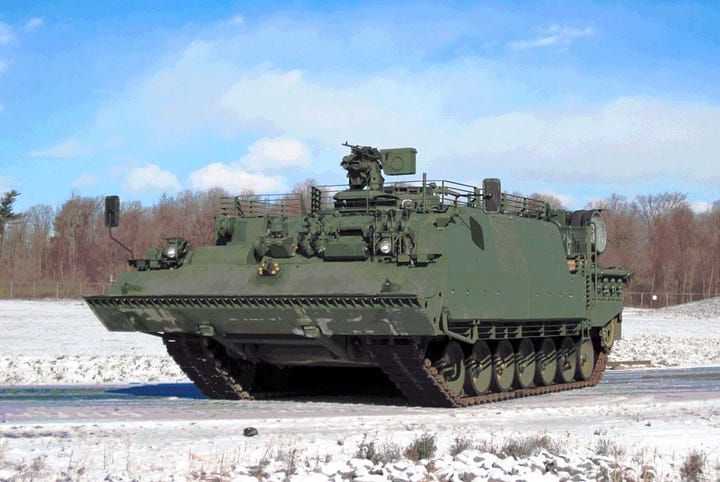The Ukrainians have reorganized at a larger scale to make the most effective use of the new weaponry they have received. But if there is one thing the Russians are good at, it is defense in depth - and they have had months to prepare. The side most likely to prevail is that which has the best intelligence and equipment - and the discipline to optimize its use. JL
Mick Ryan reports in War In the Future:
Future offensives will be different is because both sides have continuously evolved - and improved - capabilities for reconnaissance and strike. Ukraine's new division size formations introduce more complex combined arms (tactics) to the Ukrainian order of battle. They are much more capable. Significant uplift in mobility and survivability support to the Ukrainian army tells us that battlefield conditions have changed since the beginning of the war. The Russians have constructed multiple layers in their defensive zones (and) will have reserves in troops and munitions for counter attack missions. As General Zaluzhny noted in a recent interview: “They are not idiots.”Reviewing the multiple US military assistance packages since 14 October 2022, there has been a large effort to equip Ukrainian combat engineers for their coming efforts to identify, reduce and move through the dense obstacle zones constructed by the Russian Army in eastern and southern Ukraine. Demolitions munitions, obstacle reduction and mine clearance equipment, mobile bridging capabilities (Armored Vehicle Launched Bridges) as well as Mine Resistant Ambush Protected Vehicles and artillery delivered anti-tank mines, have featured on the publicly released lists of American supplied military assistance.
At the same time, the UK has provided a ‘manoeuvre support package’ including minefield breaching and bridge laying capabilities. Other armies from Germany, Canada, Finland, Slovakia, and Norway have provided equipment like combat engineering vehicles based on the Leopard tank chassis.
This significant uplift in mobility and survivability support to the Ukrainian army tells us that not only have battlefield conditions changed since the beginning of the war, but that the coming offensives by the Ukrainians will look different to those that have been conducted north of Kyiv, in Kharkiv and in Kherson in 2022. While these previous Ukrainian offensives may offer some insights into the fight ahead, there are many reasons to expect that the coming months may see an evolved approach by the Ukrainians.
The Ukrainian Offensive Will Be Different
The first reason for this is that the Ukrainians are facing a different Russian Army now than compared to 2022. Not only does it have a different commander in General Gerasimov, but there is a different balance of professional and mobilised troops. While much ink has been spilled about how mobilised troops are better at defensive than offensive operations, the reality is that the coordination of a scheme of defence over several hundred kilometres of front line is still a complex and fraught undertaking. It is certainly a more substantial undertaking than just plopping troops in trenches with anti tank weapons!
The reality is that the Russians have constructed multiple layers in their defensive zones. Some of these will be augmented with obstacles including anti-tank ditches, mines, wire and dragon’s teeth. There will be different densities of troops in each zone. Whether it will be a more static approach, or features more mobile defensive mindsets from Russian leaders remains to be seen. But, we can reasonably assume that the Russians will have reserves in troops and munitions for counter attack and counter penetration missions across the frontline. They are also very likely to have an extensive ISR plan that is focused on detecting and interdicting concentrations of Ukrainian troops before they cross their lines of departure in any attack.
While this might paint a picture of Russian military professionalism that has rarely been glimpsed in this war, it is militarily prudent to make assumptions along these lines. It is always better to prepare for a more dangerous opponent rather than a less dangerous one. As General Zaluzhny noted in a recent interview on the Russian forces: “They are not idiots.” If the Russians are able to conduct a more competent mobile defence in the coming months, it will be a different enemy than the one the Ukrainians have fought in the past 14 months. They may be weary from their current offensive, but should not be underestimated. War is too unpredictable to make such errors.
Another difference with the coming offensives is likely to be Ukrainian force structure. Over the past few months, they have been raising, equipping, manning and training three new formations for the coming offensives. These new formations, which are likely to resemble reinforced combined arms divisions, have probably been the beneficiaries of the large numbers of armored and motorised equipment provided by the US and Europe in the last few months.
How they are commanded may also be new. So far, the Ukrainians have largely fought at the brigade and below level in this war, with higher level coordination being undertaken by geographical commands. The new division size formations introduces a new and more complex combined arms formation to the Ukrainian order of battle. They are much more capable than other approaches in the past 14 months, but it will also take time to train commanders and staffs to employ them effectively. That said, the Ukrainians have demonstrated continuously throughout this war how quickly they can absorb new knowledge and systems. I expect something similar with their uptake of division level operations.
A third difference from what has come before is the dense series of obstacle zones that the Russians have constructed in Ukraine. Good armies try to avoid being committed to breaching through such areas because that is exactly what the enemy wants you to do. However, if they lie in the path of an important operational objective, there are times when breaching and fighting through such obstacle zones cannot be avoided.
And there should be no doubt about the complexity of such operations. Indeed, there is no military endeavour that is more difficult to plan, orchestrate and execute than combined arms obstacle breaching. It requires every element of an army’s combined arms team - artillery, engineers, infantry, tanks, electronic warfare, ground and aerial reconnaissance and attack (including with drones and loitering munitions), logistics, intelligence and the list goes on. Indeed, the best combat brigades in armies focus on training in such operations because if they can master these activities, they can essentially do anything.
Such complex combined arms undertakings make the special forces-centric operations of the past two decades look very simple. Mastering them by the Ukrainian army will take training, good leadership, excellent planning, much rehearsal and real time learning and adaptation. They are inevitably bloody undertakings for both sides.
A fourth reason why the future offensives will be different is because both sides have continuously evolved - and improved - capabilities for reconnaissance and strike. Both sides now employ an almost countless number of drones of many types and capabilities as well as loitering munitions. The Ukrainians have even established multiple drone attack companies in their brigades. The number and density of such systems has increased throughout the war. Both sides now operate in an environment of almost pervasive surveillance, where the ‘detection to destruction’ time has been significantly reduced. This means that deception before the operation will be vital for the Ukrainians to conceal key objectives and axes of advance, logistics holdings, troop concentrations as well as the locations of critical items such as engineer equipment and artillery.
It will also require a clever scheme of manoeuvre before and during the offensive to deceive the Russians about the locations and timing of the offensives. And it will demand ongoing efforts by the Ukrainians to conceal force concentrations, artillery, HQ and logistics as they begin their break-in battles (and hopefully exploitation) once the offensives commence. It could also mean we will see lots of smaller mini-offensives than a couple of large ones just to confuse the Russian targeting cycle and to deceive them about Ukraine’s main effort.
A final reason the coming offensives will be different is because of the strategic stakes involved. The Russians seek to draw out the conflict (I actually think this is a flawed assumption on Putin’s part, but that is another article). The Ukrainians know that the strategic clock is possibly ticking in Washington DC. With an election year likely to distract the war principle aid provided in 2024, this year will be decisive for Ukrainian battlefield operations.
Not only do they need to demonstrate decisive victories over the Russians, they must show they are effective users of all the military assistance provided in the past six months or so. The fickle politics and public’s in western nations have become less engaged in the war’s progress. The Ukrainians understand that the offensives to come must once again show the people of the west that not only is Ukraine worth supporting, but with ongoing military assistance in 2023 and beyond, they can defeat the Russian invasion.
An Evolved Offensive Campaign by Ukraine
Whether they are launched tomorrow, next week or next month, the Ukrainian offensives will be different to those we have seen already. The Russian enemy and their operations have evolved over time. The Ukrainian equipment and force structure has adapted to changes in Russian tactics and western assistance. And the battlefield continues to evolve based on how the Russians and Ukrainians interact as well as injections of new technologies.
But we can reasonably assume one thing will remain the same. As they have since the beginning of this war, the Ukrainians will continue to show the world that with their sense of purpose, adaptive mindset and pride in defending their nation, they are unbeatable.























0 comments:
Post a Comment